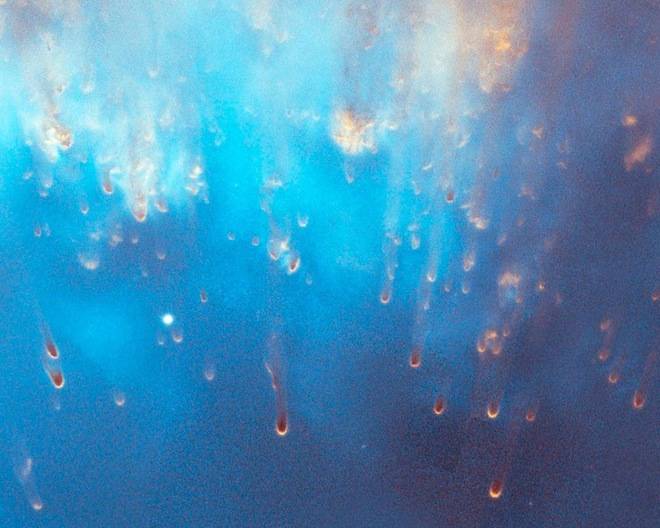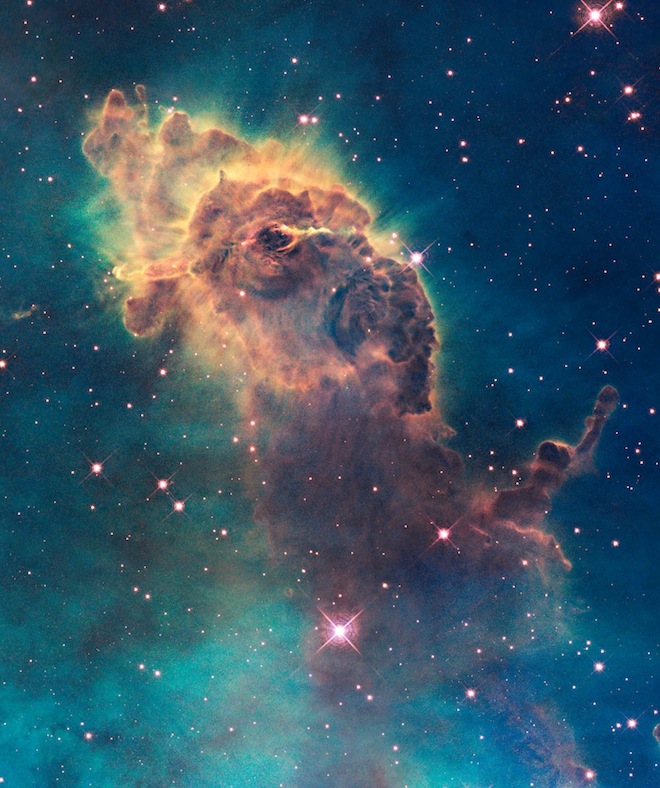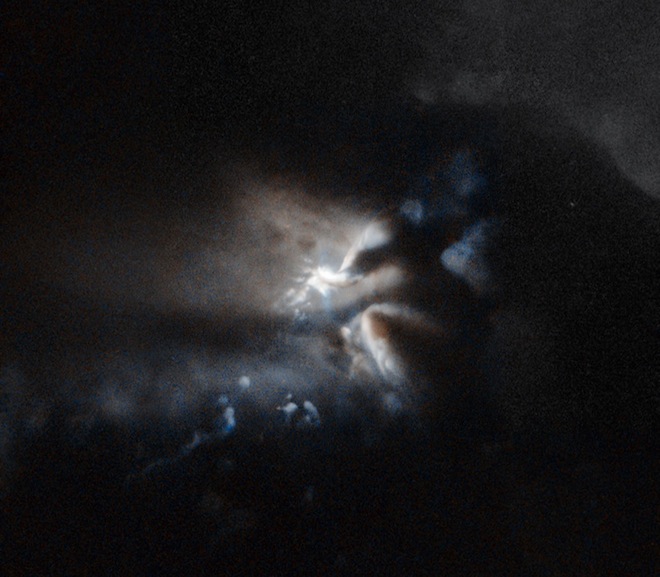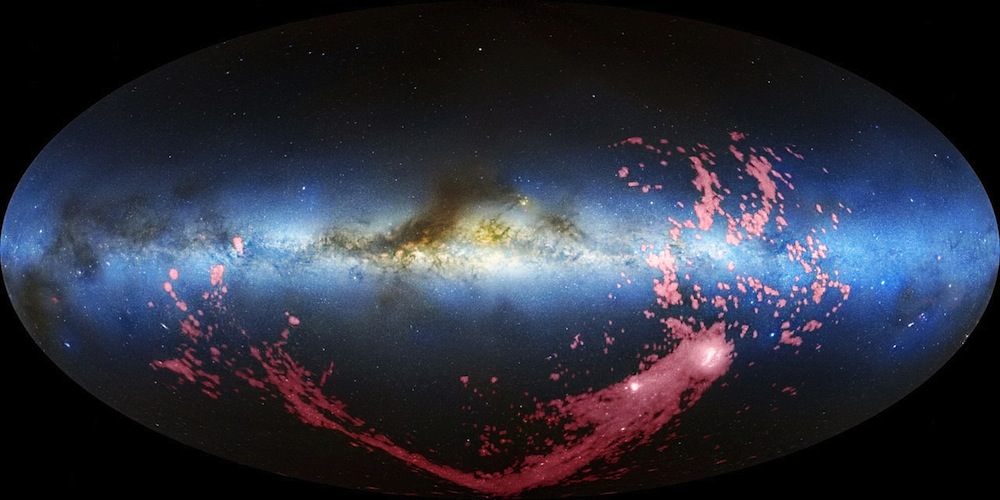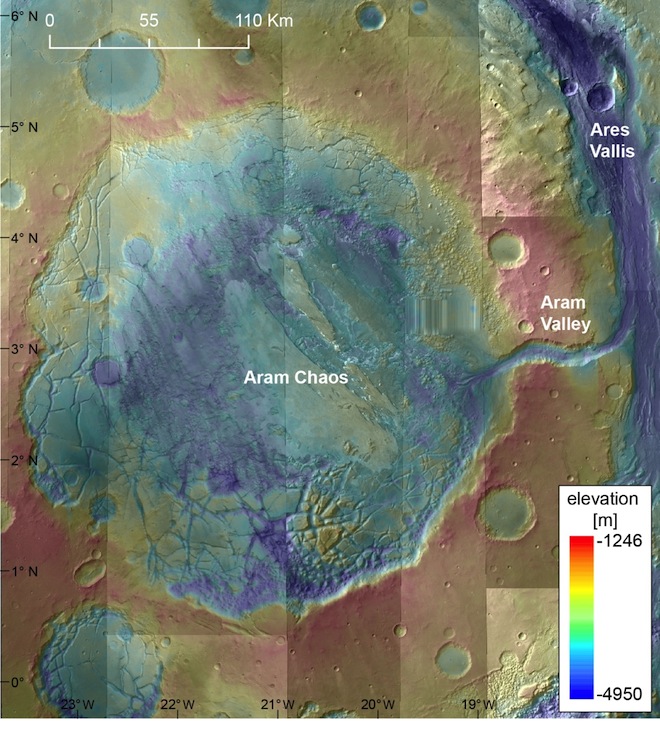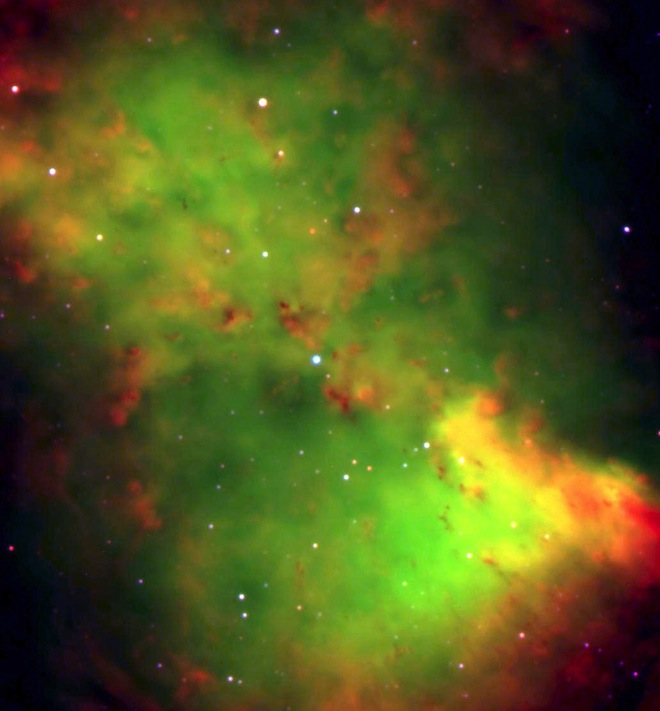Navigation
Install the app
How to install the app on iOS
Follow along with the video below to see how to install our site as a web app on your home screen.

Note: This feature currently requires accessing the site using the built-in Safari browser.
More options
You are using an out of date browser. It may not display this or other websites correctly.
You should upgrade or use an alternative browser.
You should upgrade or use an alternative browser.
Wired Space Photo of the Day
- Thread starter longknife
- Start date
- Thread starter
- #62
- Thread starter
- #63

Saturn in Shadow
Of the countless equinoxes Saturn has seen since the birth of the solar system, this one, captured here in a mosaic of light and dark, is the first witnessed up close by an emissary from Earth none other than our faithful robotic explorer, Cassini.
From Wired Space Photo of the Day - Wired Science
- Thread starter
- #65
10th Anniversary from Space
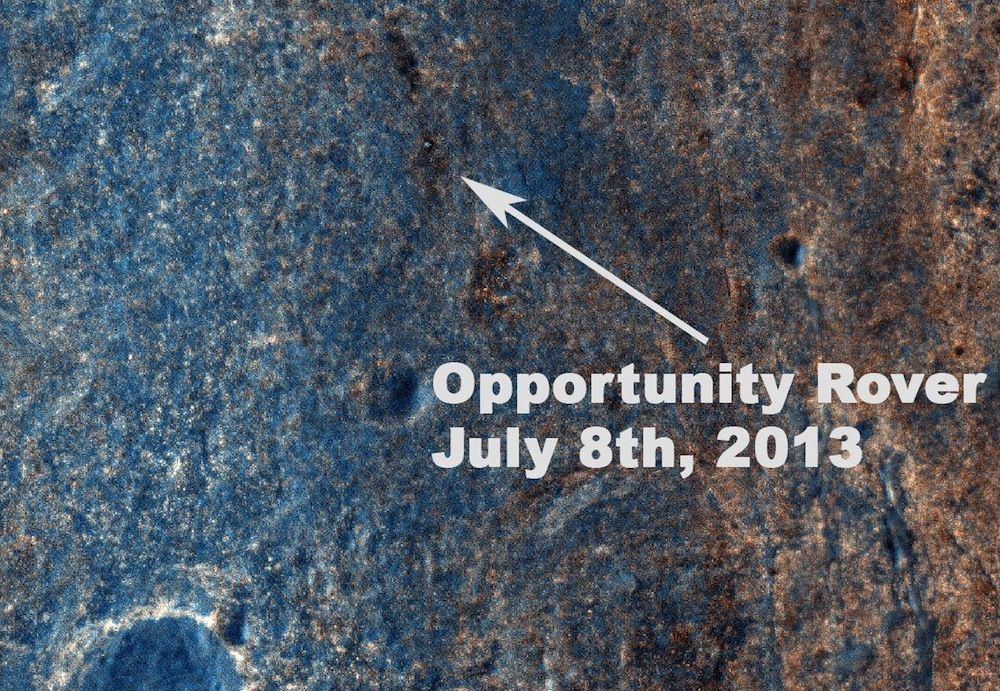
NASA's Mars Exploration Rover Opportunity has been on the western rim of Endeavour Crater in Meridiani Planum for about two years. Until May 2013, it was investigating sedimentary layers that are three to four billion years old on a portion of the rim called "Cape York." This image taken by the High Resolution Imaging Science Experiment (HiRISE) camera on NASA's Mars Reconnaissance Orbiter on July 8, 2013, captures Opportunity traversing south (at the end of the white arrow) to new science targets and a winter haven at "Solander Point," another portion of the Endeavour rim. The relatively level ground between Cape York and Solander Point is called "Botany Bay." The image was taken 10 years after Opportunity was launched from Florida on July 7, 2013, EDT and PDT (July 8, Universal Time).

NASA's Mars Exploration Rover Opportunity has been on the western rim of Endeavour Crater in Meridiani Planum for about two years. Until May 2013, it was investigating sedimentary layers that are three to four billion years old on a portion of the rim called "Cape York." This image taken by the High Resolution Imaging Science Experiment (HiRISE) camera on NASA's Mars Reconnaissance Orbiter on July 8, 2013, captures Opportunity traversing south (at the end of the white arrow) to new science targets and a winter haven at "Solander Point," another portion of the Endeavour rim. The relatively level ground between Cape York and Solander Point is called "Botany Bay." The image was taken 10 years after Opportunity was launched from Florida on July 7, 2013, EDT and PDT (July 8, Universal Time).
- Thread starter
- #66
Colorful Mercury Rays

This image emphasizes the beautiful rays of Qi Baishi, in the top of the image. The crater was named for the Chinese painter, Qi Baishi, known for his whimsical watercolors. The extensive rays of the crater mimic such whimsicality, extending far from the impact, exposing new material across the scene. The bright ray system indicates that Qi Baishi is relatively young, compared to other visible features. Notice the lack of rays extending from the west of the crater. This asymmetry indicates that the impactor struck at a relatively low incidence angle from the west.
More @ Wired Space Photo of the Day - Wired Science

This image emphasizes the beautiful rays of Qi Baishi, in the top of the image. The crater was named for the Chinese painter, Qi Baishi, known for his whimsical watercolors. The extensive rays of the crater mimic such whimsicality, extending far from the impact, exposing new material across the scene. The bright ray system indicates that Qi Baishi is relatively young, compared to other visible features. Notice the lack of rays extending from the west of the crater. This asymmetry indicates that the impactor struck at a relatively low incidence angle from the west.
More @ Wired Space Photo of the Day - Wired Science
- Thread starter
- #67
Medusa Nebula

The Medusa nebula, known scientifically as Abell 21, is an old planetary nebula some 1,500 light-years away in the constellation Gemini. It is estimated to be over 4 light-years across. This image was taken on Oct 24th, 2008 at the Mayall telescope with the mosaic camera, with [OIII] (assigned a blue color) and H-alpha (orange) filters.
This image was released during the 100 Hours of Astronomy webcast, "Around the World in 80 Telescopes" held from April 3-4, 2009, during the International Year of Astronomy 2009. View the recorded event from KPNO. See also this image of NGC 6520 from CTIO, which was also released during the webcast

The Medusa nebula, known scientifically as Abell 21, is an old planetary nebula some 1,500 light-years away in the constellation Gemini. It is estimated to be over 4 light-years across. This image was taken on Oct 24th, 2008 at the Mayall telescope with the mosaic camera, with [OIII] (assigned a blue color) and H-alpha (orange) filters.
This image was released during the 100 Hours of Astronomy webcast, "Around the World in 80 Telescopes" held from April 3-4, 2009, during the International Year of Astronomy 2009. View the recorded event from KPNO. See also this image of NGC 6520 from CTIO, which was also released during the webcast
- Thread starter
- #68
Galaxy Swirl
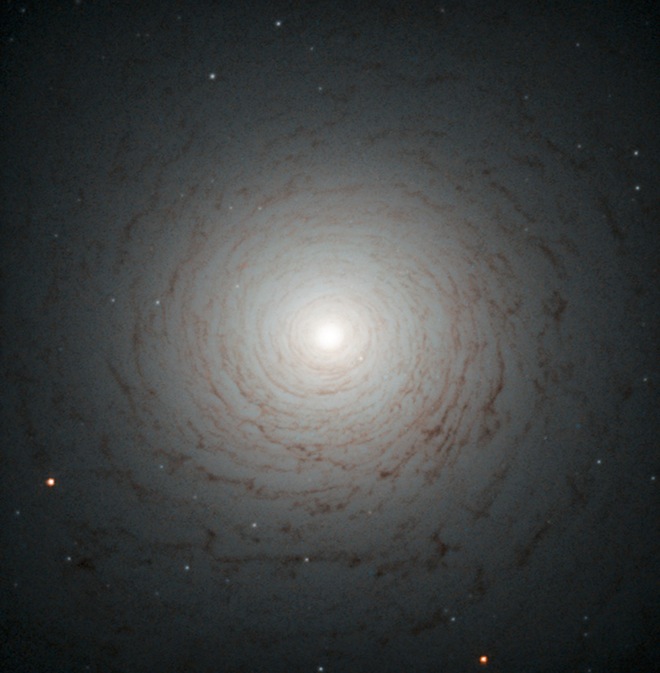
This striking cosmic whirl is the centre of galaxy NGC 524, as seen with the NASA/ESA Hubble Space Telescope. This galaxy is located in the constellation of Pisces, some 90 million light-years from Earth.

This striking cosmic whirl is the centre of galaxy NGC 524, as seen with the NASA/ESA Hubble Space Telescope. This galaxy is located in the constellation of Pisces, some 90 million light-years from Earth.
- Thread starter
- #69
Flying V

This large flying V is actually two distinct objects a pair of interacting galaxies known as IC 2184. Both the galaxies are seen almost edge-on in the large, faint northern constellation of Camelopardalis (The Giraffe), and can be seen as bright streaks of light surrounded by the ghostly shapes of their tidal tails. @ Wired Space Photo of the Day - Wired Science

This large flying V is actually two distinct objects a pair of interacting galaxies known as IC 2184. Both the galaxies are seen almost edge-on in the large, faint northern constellation of Camelopardalis (The Giraffe), and can be seen as bright streaks of light surrounded by the ghostly shapes of their tidal tails. @ Wired Space Photo of the Day - Wired Science
- Thread starter
- #70
- Thread starter
- #71
- Thread starter
- #72
- Thread starter
- #73
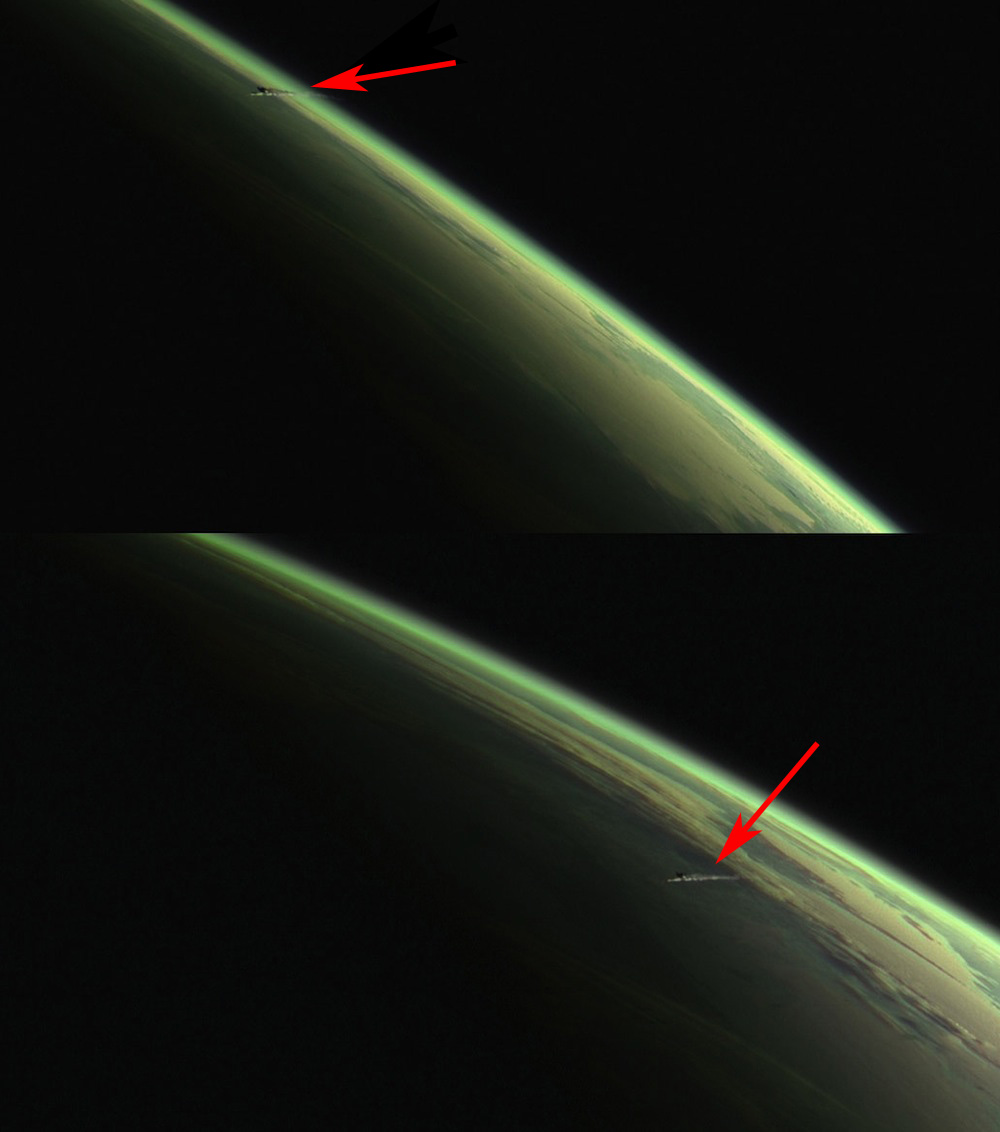
Chelyabinsk Meteor from Space
What are those strange, long clouds hovering over the limb of the Earth? They are streaks in the upper atmosphere left behind by a meteorite that flared over Chelyabinsk in Russia on Feb. 15. @ Wired Space Photo of the Day - Wired Science
- Thread starter
- #74
- Thread starter
- #75
- Thread starter
- #76
- Thread starter
- #77
- Thread starter
- #78
- Thread starter
- #79
- Thread starter
- #80
Moon's Mascara Running

Northern flank of Diophantus crater. LROC NAC M124797072L, 0.56 m/pixel, image width is about 678 meters. Illumination is from the bottom of the image, downslope direction is from top to bottom of the image. This image from NASA's Lunar Reconnaissance Orbiter (LRO) reveals the upper slopes of Diophantus crater, located on the western edge of Mare Imbrium. The upper dark area of this image corresponds to the flat mare surface, outside of the crater. The most striking feature here is the dark material that flowed down the crater wall. The reflectance of surface materials is controlled by various factors such as sunlight direction, grain sizes and surface textures, and composition. In this picture, the dark materials are most likely a different composition (relatively bright materials also flowed down-slope next to the dark flows).

Northern flank of Diophantus crater. LROC NAC M124797072L, 0.56 m/pixel, image width is about 678 meters. Illumination is from the bottom of the image, downslope direction is from top to bottom of the image. This image from NASA's Lunar Reconnaissance Orbiter (LRO) reveals the upper slopes of Diophantus crater, located on the western edge of Mare Imbrium. The upper dark area of this image corresponds to the flat mare surface, outside of the crater. The most striking feature here is the dark material that flowed down the crater wall. The reflectance of surface materials is controlled by various factors such as sunlight direction, grain sizes and surface textures, and composition. In this picture, the dark materials are most likely a different composition (relatively bright materials also flowed down-slope next to the dark flows).
Similar threads
- Replies
- 14
- Views
- 1K
Forum List
-
-
-
-
-
Political Satire 8087
-
-
-
-
-
-
-
-
-
-
-
-
-
-
-
-
-
-
-
ObamaCare 781
-
-
-
-
-
-
-
-
-
-
-
Member Usernotes 471
-
-
-
-
-
-
-
-
-
-



